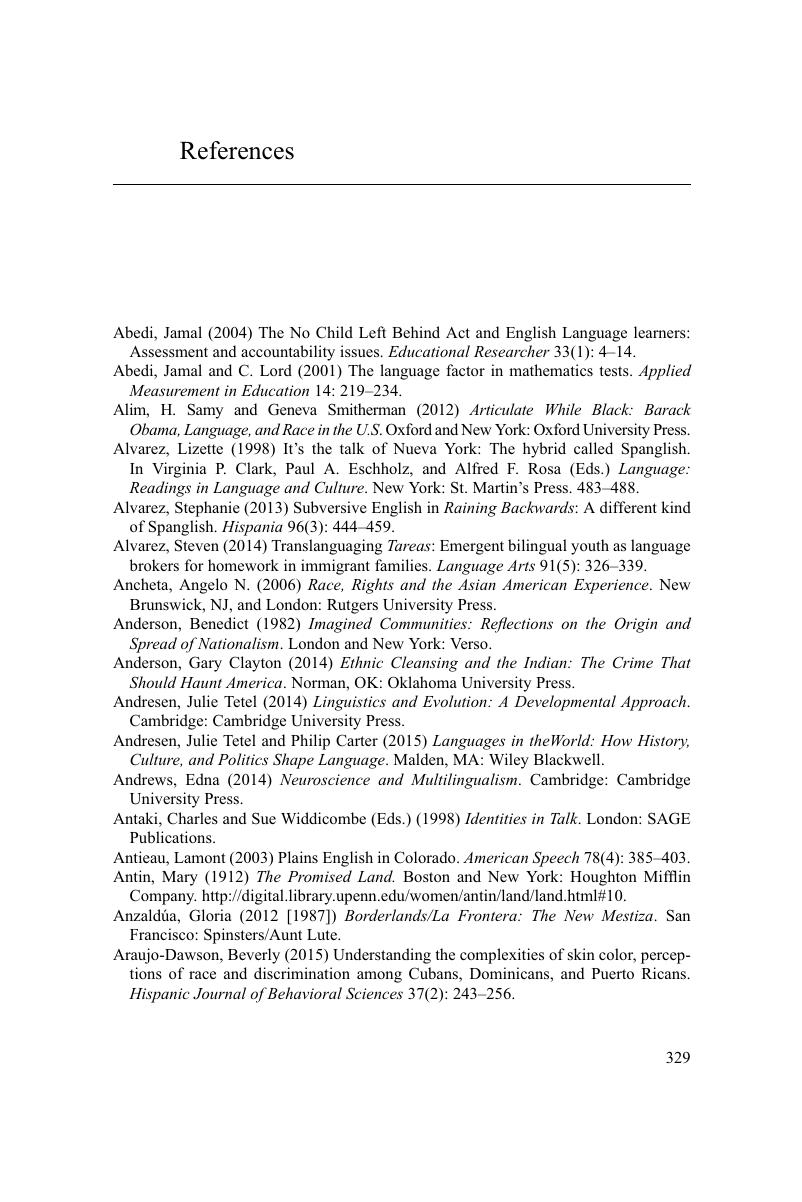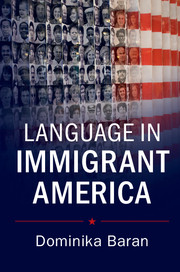Book contents
- Language in Immigrant America
- Language in Immigrant America
- Copyright page
- Dedication
- Contents
- Figures and Tables
- Preface
- Acknowledgments
- Introduction
- 1 Whose America?
- 2 The Alien Specter Then and Now
- 3 Hyphenated Identity
- 4 Foreign Accents and Immigrant Englishes
- 5 Multilingual Practices
- 6 Immigrant Children and Language
- 7 American Becomings
- Epilogue
- References
- Index
- References
References
Published online by Cambridge University Press: 06 October 2017
- Language in Immigrant America
- Language in Immigrant America
- Copyright page
- Dedication
- Contents
- Figures and Tables
- Preface
- Acknowledgments
- Introduction
- 1 Whose America?
- 2 The Alien Specter Then and Now
- 3 Hyphenated Identity
- 4 Foreign Accents and Immigrant Englishes
- 5 Multilingual Practices
- 6 Immigrant Children and Language
- 7 American Becomings
- Epilogue
- References
- Index
- References
Summary

- Type
- Chapter
- Information
- Language in Immigrant America , pp. 323 - 328Publisher: Cambridge University PressPrint publication year: 2017



